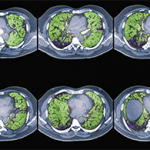We believe that standardization of criteria for UCTD will unify research, predict which patients’ illnesses will evolve to a named CTD, improve communication and, hopefully, improve outcomes.
Who Is Impacted?
Diagnosis names inform patient care and dictate research efforts. They influence administration, communication and public policy.9 Heterogeneous definitions, small sample sizes and lack of comparison groups weaken studies of UCTD.
UCTD lacks standardized billing codes. Standardized billing codes for named diagnoses are the basis for treatment, study, billing and reimbursement for physicians, researchers and insurance companies.
Diagnostic uncertainty causes patient anxiety and discomfort. Patients with UCTD describe rheuma-frustration, sadness and feelings of self-consciousness resulting from the lack of understanding and awareness of UCTD.10 Patient fear may arise from the uncertainty surrounding their prognosis and risk of progression to a more defined CTD. Although UCTD is typically associated with fewer or less severe disease manifestations than defined CTDs, patients with this diagnosis similarly perceive a worse physical and mental quality of life than members of the general population.11,12
Preliminary data from our institution suggest that patients with UCTD, compared with those with SLE, may experience a similar degree of anxiety, depression and fatigue (unpublished data); as our data collection is ongoing, this will be confirmed in future studies.
Psychosocial interventions—educational materials, support groups and counseling—may be important in helping patients cope with a UCTD diagnosis.10
Risk Factors for Disease Progression
The evolution from UCTD to a definable CTD most often occurs within the first five years of UCTD onset. One meta-analysis published in 2023 by Rubio and Kyttaris found that UCTD most commonly progresses to SLE and RA.13
The variability between research cohorts defining and studying UCTD makes it difficult to assess risk factors associated with disease progression. However, multiple meta-analyses have proposed clinical and serological disease features of UCTD which increase the risk of developing a defined CTD. Clinical observations (e.g., Raynaud’s phenomenon, polyarthritis, photosensitivity, sicca, abnormal nailfold-capillaroscopy), routine blood tests (e.g., cytopenias) and serologies (e.g., high-level anti-nuclear antibody titers, anti-centromere, antiphospholipid or RNP antibodies) at baseline are seen at higher frequencies in patients who evolve to a CTD compared with those who do not.13,14
As may be expected, the presence of key clinical features of defined CTDs—including serositis, renal involvement, positive anti-Smith antibody and hypocomplementemia for SLE and SSc-specific antibodies and NFC abnormalities for SSc—increase the risk of progression to each respective disease.15 Early recognition of risk factors for disease progression will help physicians identify which patients require closer monitoring and potential intervention. Although the aforementioned features are thought to increase the risk of disease progression, they require further evaluation using predictive models and UCTD cohorts that utilize the same inclusion and exclusion criteria.

